When discussing about flow metering, a number of terms are important to consider, which include Repeatability, Uncertainty, Accuracy, and Turndown, which are commonly used.
Repeatability of Flow Meter
This describes the ability of a flow meter to indicate the same value for an identical flow rate on more than one occasion.
It should not be confused with accuracy i.e. its repeatability may be excellent in that it shows the same value for an identical flow rate on several occasions, but the reading might be consistently wrong (or inaccurate).
Good repeatability is important. However, this does not dilute the importance of accuracy under any circumstances.
Uncertainty of Flow Meter
The term ‘uncertainty’ is now becoming more commonly referred to than accuracy.
This is because accuracy cannot be established, as the true value can never be exactly known.
However ‘uncertainty’ can be estimated and an ISO standard exists offering guidance on this matter (EN ISO/IEC 17025).
It is important to recognize that it is a statistical concept and not a guarantee.
For example, it may be shown that with a large population of flow meters, 95% would be at least as good as the uncertainty calculated. Most would be much better, but a few, 5% could be worse.
Accuracy of Flow Meter
This is a measure of a flow meter’s performance when indicating a correct flow rate value against a ‘true’ value obtained by extensive calibration procedures. The subject of accuracy is dealt with in ISO 5725.
The following two methods used to express accuracy have very different meanings:
Percentage of measured value or actual reading
For example, a flow meter’s accuracy is given as ±3% of the actual flow.
At an indicated flow rate of 1000 kg/h, the ‘uncertainty’ of actual flow is between:
1000 – 3% = 970 kg/h
And
1000 + 3% = 1 030 kg/h
Similarly, at an indicated flow rate of 500 kg/h, the error is still ±3%, and the ‘uncertainty’ is between:
500 kg/h – 3% = 485 kg/h
And
500 kg/h + 3% = 515 kg/h
Percentage of full-scale deflection (FSD)
A flow meter’s accuracy may also be given as a percentage of full-scale deflection FSD, which means that the measurement error is expressed as a percentage of the maximum flow that the flow meter can handle.
The error stated in percentage FSD tends to be smaller than the error as a percentage of actual reading.
For this example, a value of ±0.3% FSD will be used.
As in the previous case, the maximum flow = 1000 kg/h.
At an indicated flow rate of 1000 kg/h, the ‘uncertainty’ of actual flow is between:
1000 kg/h – 0.3% = 997 kg/h
And
1000 kg/h + 0.3% = 1003 kg/h
At an indicated flow rate of 50 kg/h, the error is still ±3 kg/h, and the actual flow is between:
50 kg/h – 3 kg/h = 47 kg/h an error of – 6%
And
50 kg/h + 3 kg/h = 53 kg/h an error of +6%
As the flow rate is reduced, the percentage error increases.
Comparison of Flow Meter Accuracy
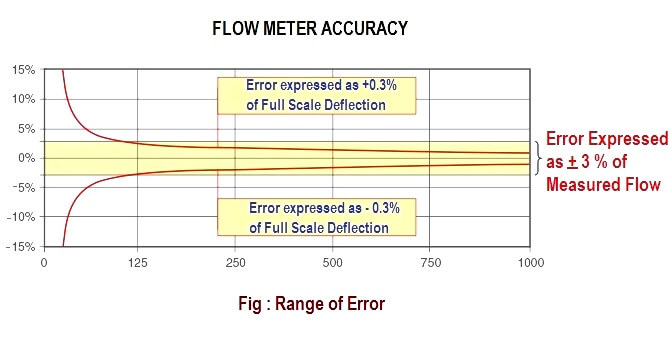
A comparison of these measurement terms is shown graphically in the above figure.
If you liked this article, then please subscribe to our YouTube Channel for Instrumentation, Electrical, PLC, and SCADA video tutorials.
You can also follow us on Facebook and Twitter to receive daily updates.
Read Next:
- Advantages of Flow Meter
- Magnetic Flow Meter Corrosion
- What is an Orifice Flange?
- Displacement Flowmeters
- What is a Dall Tube Flowmeter?
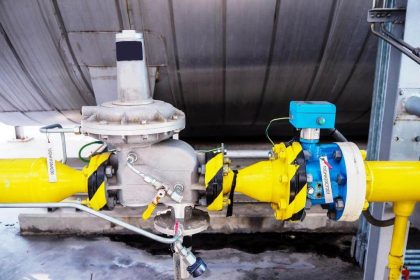

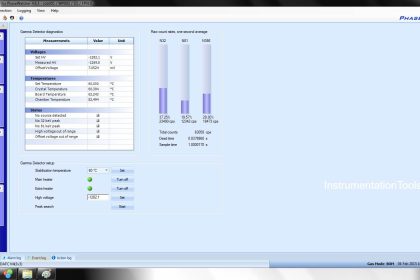
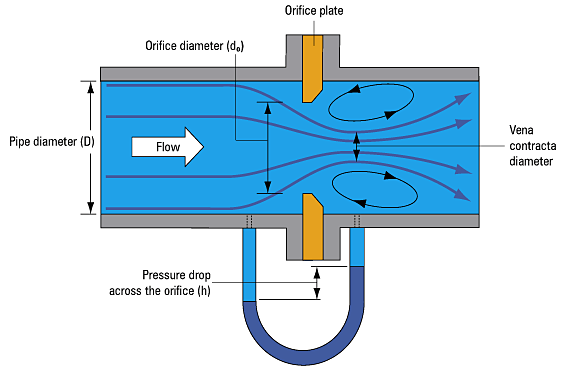
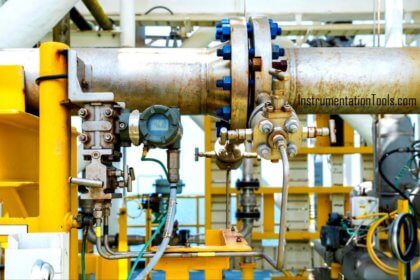
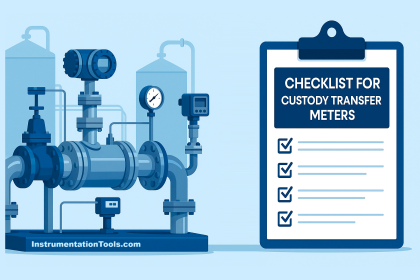
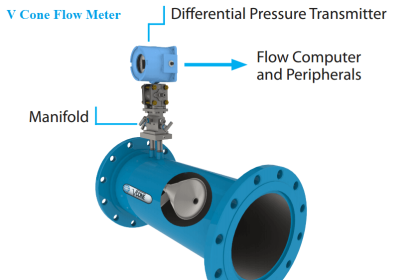
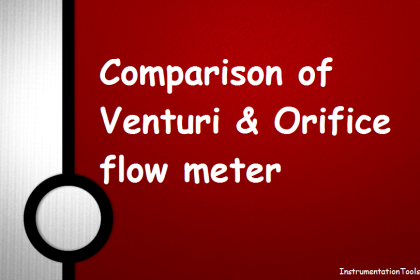



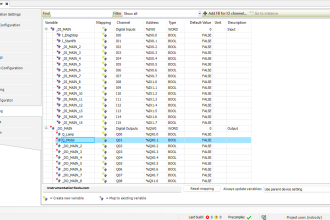


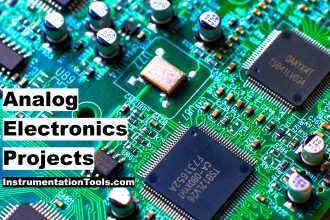


Dear sir,
How can i save the page in pdf format. In the earlier version of the website there was option to download the page but now it is not available.
Thanks and regards
Ayon Bhowmik
At an indicated flowrate of 50 kg/h, the error is still ±3 kg/h, and the actual flow is between:
50 kg/h – 3 kg/h = 47 kg/h an error of – 6% —- It is error 0.6 % or 6%?
And
50 kg/h + 3 kg/h = 53 kg/h an error of +6% —- It is error 0.6 % or 6%?
Please clarify.
Best Regards
My instrument range is 0 – 74 ln/min and Accuracy is (0.5% Rd +0.1 % FS) so tell me what is acceptable accuracy in that case?